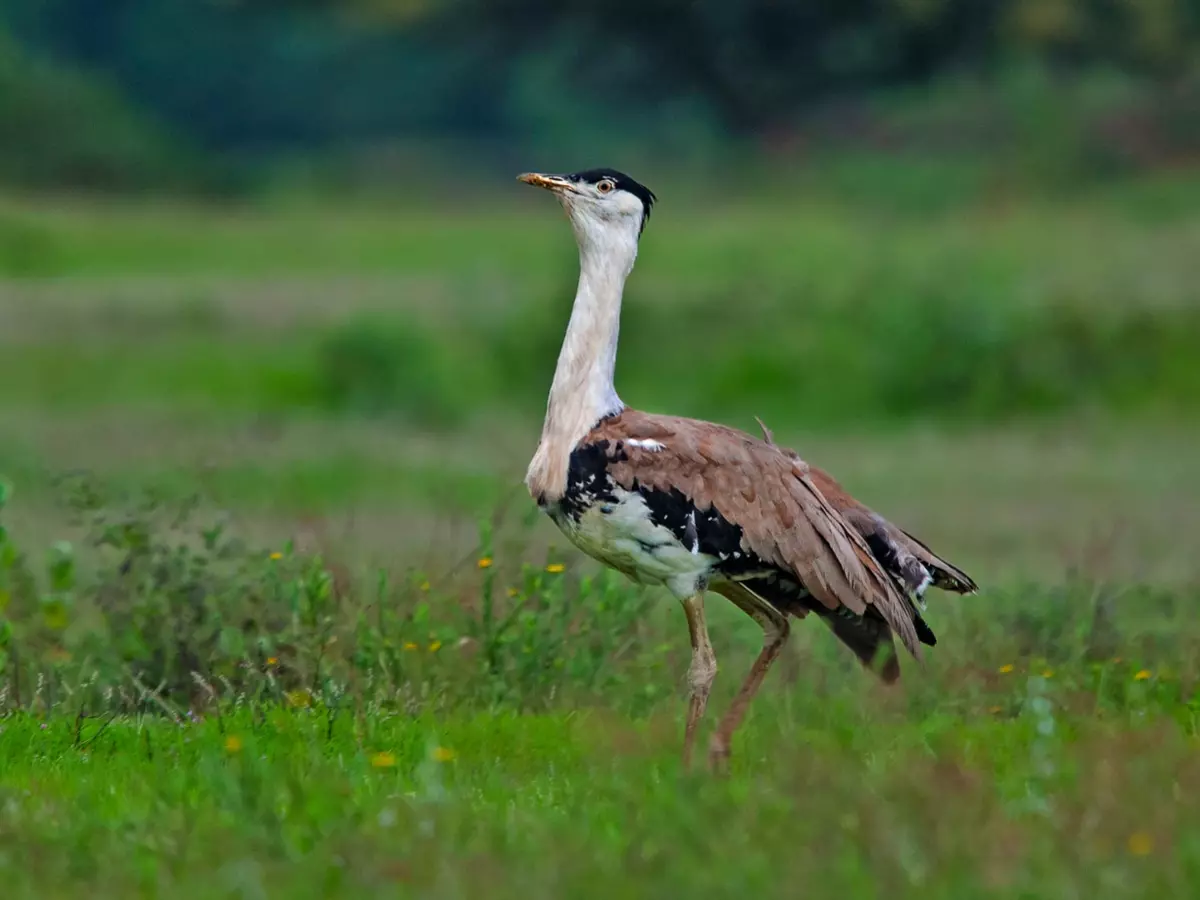How Fire Fly Bird Diverters Are Helping Save Endangered Great Indian Bustards From Power Lines
The Ministry of Environment Forest and Climate Change (MoEFCC) along with the Wildlife Conservation Society (WCS) India has come up with a ¡°firefly bird diverter¡± to protect the endangered Great Indian Bustards from power lines.

The Ministry of Environment Forest and Climate Change (MoEFCC) along with the Wildlife Conservation Society (WCS) India has come up with a ¡°firefly bird diverter¡± to protect the endangered Great Indian Bustards from power lines.
GIBs which are said to be less than 200 in number in the wild face a great threat from overhead power lines during flights.
 BCCL
BCCL
To alert them about the power lines, authorities have now set up flaps on the power lines that work as reflectors for bird species. These flaps can spot them from a distance of about 50 meters and change their path of flight to avoid collision with power lines.
The diverters are called fireflies because they look like fireflies from a distance, shining on power lines in the night.
While it is being rolled out as a pilot project in Rajasthan, the National Green Tribunal (NGT) on Wednesday directed the Centre through the Ministry of Forests and other states to install 'Bird Diverters' on existing solar and wind powerlines as soon as possible and preferably within four months.
 BCCL
BCCL
A bench of the NGT, headed by its chairperson Justice Adarsh Kumar Goel issued several directions on Wednesday while disposing of a petition on an NGO, Centre for Wildlife and Environmental Litigation through Bhanu Bansal who stated that there is an urgent need to protect and conserve the great Indian bustard as the same is on the verge of extinction.
Tribunal further directs the respondents to provide fresh permission only after ensuring the underground powerlines in new projects. It has also directed the MoEFCC to take appropriate steps to ensure that EIA includes Impact on Biological Diversity for such kinds of Solar Energy Projects.
The respondents in the matter were, MoEFCC, National Board of Wildlife, National Biodiversity Authority, States of Rajasthan, Gujarat, Karnataka, Andhra Pradesh and Maharastra.
 IFHC
IFHC
Petitioner NGO, represented by Advocate Gaurav Kumar Bansal highlighted the issue of extinction of GIB. The plea submitted that the said species is listed as critically endangered and is a Schedule 1 (Highest Protection Status under Wildlife Protection Act -1972) Animal.
The plea stated that according to the recent population assessment, the largest population of around 169 GIB occur in Thar landscape of Rajasthan (Desert National Park in Jaisalmer alongside Jodhpur) and around 15 GIB each, occurring in Gujarat (Lala-Naliya Sanctuary and itsneighbourhood in Kachchh), Maharashtra (Bustard Sanctuary and its neighbourhood in Kurnool) and Karnataka (Bellary).
 IFHC
IFHC
Petition lawyer Advocate Gaurav Kumar Bansal submitted that being a low and heavy flyer, GIB faces a High Risk of fatal collision with power lines. He submitted that in order to protect and conserve GIB, MoEFCC issued a project namely "Habitat Improvement and Conservation Breeding of Great Indian Bustard- an Integrated Approach".
The Karnataka High Court had recently issued notice to the state government and directed it to place on record the immediate steps it proposes to take for protecting, surviving bird species GIBs, in the state.
